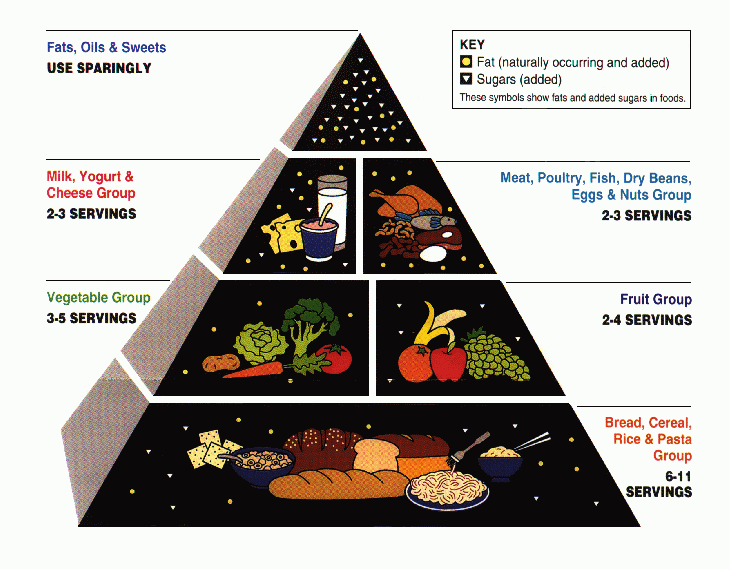My last post dealt with two very important pyramids in human history (no, not those pyramids) Abraham Maslow's hierarchy of human needs and the food pyramid put out by the U.S. government in 1992. If I were to create my own food pyramid, however, I would begin with water at the bottom.
Water, in some cultures, has been referred to as the, "essence of life." No doubt, our body weight is composed of 90% water and our bodies crave replenishment. Just the sound of it relaxes us as our many white noise machines have an ocean setting. For me, I love to carry around my water bottle as a type of 'safety blanket'; knowing the liquid is always nearby. For me, I picture the azure blue substance swirling peacefully at the bottom of the 'updated' food pyramid. Not only does water replenish our bodies with that which it might lose during the day, it also can be helpful in it's various forms.
Liquid- When I was in high school, a trainer once shouted the benefits of water to me. "It pushes waste through your system." " It speeds up your metabolism." As a teenager who ate Subway, I was thankful for a substance that would push anything out of my system. As I've gotten older, however, I can tell that water has a profound affect from my teeth to my "waste bin." "Every time you eat carbs or dairy, it's like an acid bath for your mouth," a hygienist once told me. Shortly after I eat, I crave a sip of water. It rinses my mouth out and, like my trainer once said, begins to push things through my system.
Gas- Speaking of the 'waste bin', water as steam also has massive health benefits. Any time spent in a steamy shower or sauna and you've known the drastic benefits steam can have on your sinuses. Steam is known to loosen mucus, improve one's circulation and moisturize skin. For all the money we put into skin moisturizers, medical procedures and medicines, a relaxing stay in the shower or sauna may be the first step in curing these problems at a very basic level.
Ice- Ice, ice, baby. When I was on a cruise in 2005, the crew was promoting a new seaweed treatment that was supposed to "sweat out your toxins" (see above for the benefits of steam). When I went for a consultation, they said that "lotions and potions" have built up in my skin and I needed their seaweed treatment. Of course I didn't believe the hype but it got me thinking that lotions or many things we put on our skin have ingredients we don't need. Enter ice. It's an old wives tale that circling an ice cube around your eye until it melts will give you younger looking skin but why not try it?
Many of these, "remedies" sound basic but why not try them? We can always go back to high cost products and procedures which may contain unnecessary ingredients but I'm relatively certain these remedies are useful. After all, water is not called the "essence of life," for nothing. Let it be the greatest entity you consume and I'm sure you'll be surprised!


